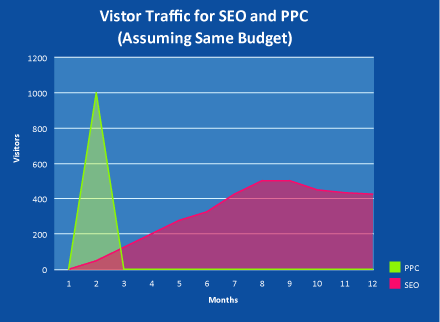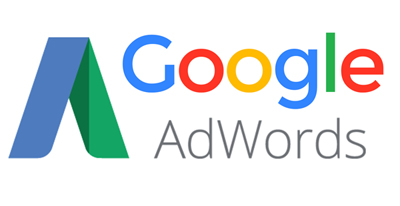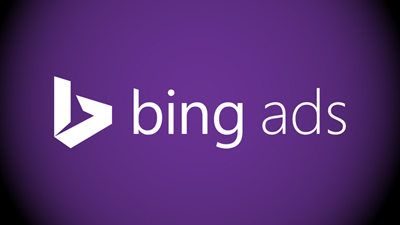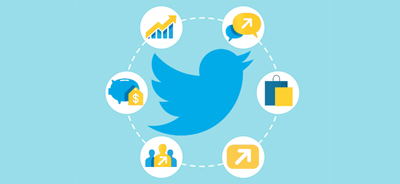Steph W. from SEOPressor


...help you check your website and tell you exactly how to rank higher?


88
score %
SEO Score

Found us from search engine?
We rank high, you can too.
SEOPressor helps you to optimize your on-page SEO for higher & improved search ranking.
By allysa on August 11, 2016

Online ads are what help some of the biggest businesses in the world make their money online, but they come at a cost.
Unlike organic promotional tools like Search Engine Optimization, or direct promotional tools like inbound marketing, paid advertisement helps you get an instant boost in traffic to your site.
Also unlike SEO and inbound marketing, however, that effect disappears the moment you stop investing.
As such, paid advertising is a sprint technique – they’ll boost your anaerobic advertising performance, but have little effect on your aerobic performance.

Paid ads yields instant traffic spike when you run it. SEO on the other hand takes a while to kick in but once it does, it’s staying.
Running a successful business is running a marathon, but you still need to be able to sprint ahead of the competition when you need to: at the very start, or when you’re near the finish line.
But that’s enough of the exercise metaphors, I’m sweating already.
If your paid ads are going to be effective, you need to maximize the ROI on every click you get. This means becoming a master of the art form.
In this online advertisement guide, I’m going to take you through the fundamentals so that you can hone your approach, and see better results than ever.
The first thing you’ll need to master online ads is understand what they’re good for, and what they’re not so good for.

Online ads are much like ‘roids. Abs not included.

Spending on ads is totally cool as long as you get multiples of what you spend back. And if you have a lot of them to spend in the first place.
Maximizing ROI is all about finding keywords that are on the up, offering disproportionate clicks to their price.
As you can see, there is lots of potential in paid advertising, but lots of risks too. The biggest of these is the online advertisement cost.
As I pointed out – this is a sprint technique for short term gain, but the timing of those sprints has to be right. These are the best times when investing in paid advertising can show you serious return on investment.

A short boost in a critical moment can make all the difference in your marketing result.
This can help you poach regular customers from competitors, but you have to be ready to deliver better service and value from the start if you want to keep them.
The same goes for a blog or other content based website.
If you don’t have enough content yet to get in the same arena as the heavyweights in your niche, paid advertising can bridge the gap between the creation of your content and when its SEO benefits begin to take effect.

Online advertising comes in many flavors for you to choose from according to what you need.
You’ve probably heard a few different words flying around, leaving you wondering, what is pay-per-click anyway? What’s a CPA? Never fear, your jargon-busting guide is here.
It means you only pay for tangible results.
Google AdWords, Facebook Ads and more use this format, so it’s the one you’re most likely to encounter. This splits the risk between you and the advertiser.
Because you take all of the risk for the ad’s success, you get a better rate. If you’re confident in being able to optimize clicks on your ads, this is the way to get maximum exposure.
This can be especially worthwhile to get exposure on (and therefore association and implied endorsement from) prestige sites in your niche.
This offers the least risk to you, which means it’s also the most expensive form of online advertising.
This is mainly achieved through affiliate marketing, but it only really works on highly targeted markets, in very specific niches.
With these three main forms of online advertisement available, CPC is always the one we would recommend for beginners.
CPM means you risk spending money on nothing, or even actively damaging your brand if you get it wrong.
CPA is rarely going to be worth your time, and if it is, could cost you too much. Only CPC offers the right balance.
There are individual ad platforms on every major site and social media presence, all of which target different markets and allow you to customize your approach in different ways. Here, I’ll give you a summary of each so you can decide which is the best for your product or service.



You can select your competitors pages and market directly to those who have Liked them. Where Bing and Google are behavior based marketing tools, Facebook is a taste-based marketing tool.

You’ll have to go deep into the bowels of Twitter’s back-end developer platform to find much hope. Not recommended.

LinkedIn Ads help you market directly to the gatekeepers within a business. This means the cost is expensive – the most expensive I’ve seen – but it gives you direct access to high value leads.
One advert here could lead to a global business adopting your product across their whole infrastructure, so the rewards justify the price.
If you are a content marketer or blogger, you could do a lot worse than using StumbleUpon to generate new semi-organic traffic.
This means your web page or blog post IS your ad, and that saves you time and energy.
While still pretty niche, StumbleUpon is working on a second wave of relevancy. Best for use on products with broad appeal.
YouTube is the biggest site online, and the most popular with young people – even moreso than Facebook.
With longer form skippable ads and shorter non-skippable ads, you can chance engagement in a longer pitch if you’re confident it’ll grab attention, or simply make people watch a short, snappy pitch.
Video is delivering some pretty high return on investment, and better conversion rates, than any other platform. That’s likely because it’s rarer and more similar to TV advertising, which makes people see brands as heavyweights.
These are the key methods of paid online advertisement, but there are other less conventional avenues that can lead to surprising ROI. If you want to think outside the box, these can be really rewarding.

Press releases about your brand will instantly appear in the news section of search engines.
The only difference between those who get that coverage and those who don’t is that they send the press releases in the first place. Companies like MarketersMEDIA and PRWhirlWind can help you compose a legitimate press release that can attract local and even national media attention.
What’s more, you can use Press Releases for backlinks to your website associated with targeted keywords, giving them SEO benefits. These companies can syndicate the press release to hundreds of news sites in dedicated networks, so there’s a guaranteed minimum exposure.
Or you can simply target influential blogs to advertise on. Often the best way to do this is to establish a relationship and seed a guest post on this blog to establish yourself as an authority in the field.
For those who list their products on those sites, this can be a superb way of redirecting people away from competitors and toward your own material.
It’s also a way to legitimize your brand by putting yourself alongside the most important players in your niche.
So, now you know just about all the possible ways you can advertise online. What’s more, you know which methods appeal to what audiences, which offer the best return on investment, and what will work best for your products and services.
You should also have a better idea of when you can best employ these methods to get results. Not bad so far.
But this is only the beginning. There’s much to learn about the granular details of these approaches, and I’m going to do whatever I can to help. For starters, I plan to write a series on ways to best advertise on each major platforms.
Let me know in the comment if you’d like to read such series or if you have any other curiosities need answering!
Updated: 29 December 2025


Save thousands of dollars (it’s 100x cheaper)

Zero risk of Google penalty (it’s Google-approved)

Boost your rankings (proven by case studies)
Rank High With This Link Strategy
Precise, Simplified, Fast Internal Linking.
